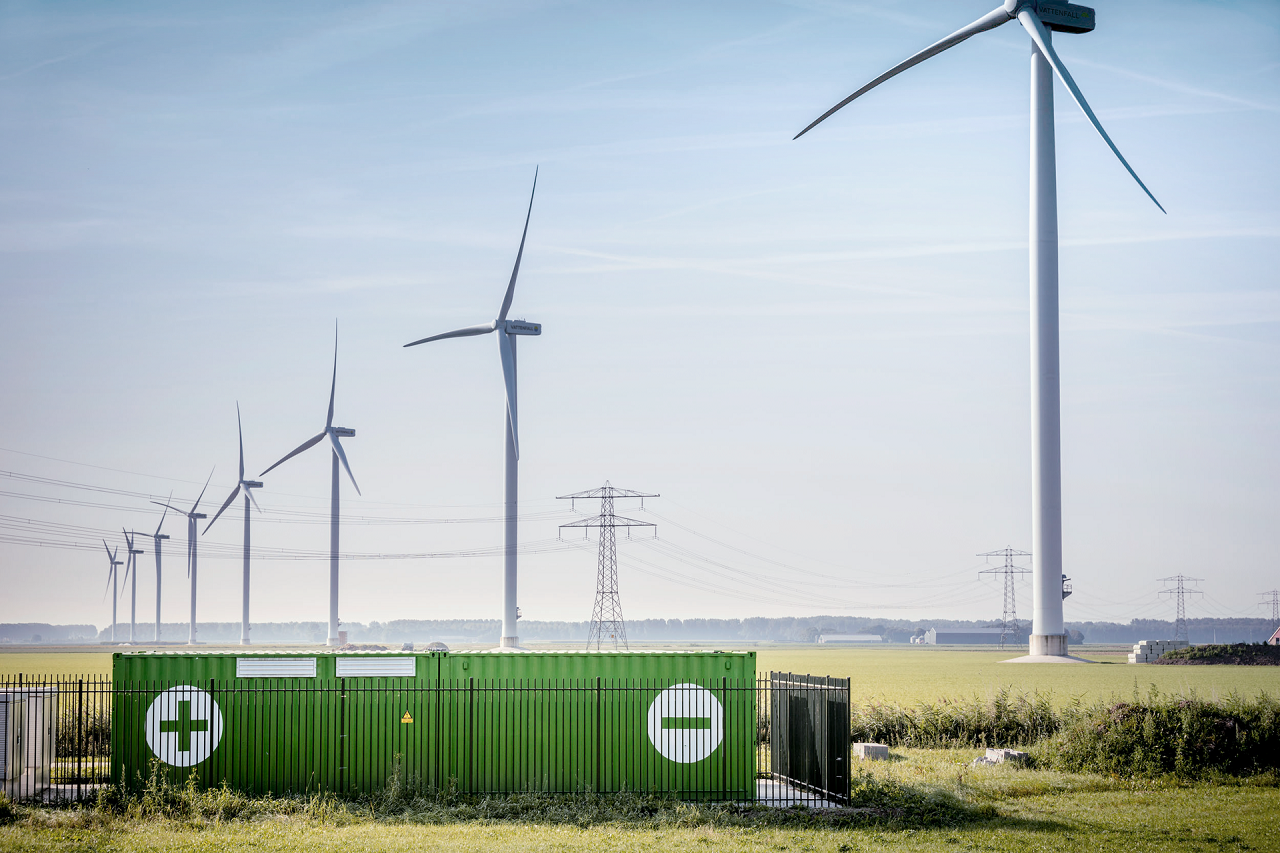
Large-scale battery storage: utilising opportunities in the flexibility market and finding the optimal marketing strategy
Fossil-free flexibility will be a key to a stable and efficient energy supply in the future. This is because a steadily growing share of renewable - and therefore weather-dependent - electricity production increases price volatility in trading enormously. Battery storage systems offer opportunities both in terms of security of supply and from a marketing perspective.
February 2024
Even today, the feed-in of wind and solar energy into the German electricity grid and hourly electricity prices are interrelated - resulting in weather-related fluctuations in production and price spikes. Of course, this poses major challenges for market participants on the one hand, but on the other hand it is precisely this volatility that offers a wide range of opportunities for flexible systems such as battery storage systems: when prices are low, they can be charged and fed into the grid when prices are high.
We expect a considerable increase in battery storage capacity as part of the solution, especially for short-term daily flexibility requirements. This would serve to optimise portfolio management both in terms of grid stability and for suppliers and retailers.
Planning storage and renewable energy systems together
Exciting use cases are opening up, particularly in combination with renewable energy systems. Wind and solar parks generally require a huge amount of space and are subject to time-consuming authorisation procedures. In this context, it may make sense to plan a comparatively small space for a battery storage system. Synergies can result from joint grid connection, project planning, construction and operation.
Today, batteries are available in modular design and thus pave the way for a very flexible attachment in terms of the ratio of storage capacity and performance. The decision on the optimum dimensioning and number of cycles is, on the one hand, a question of cost - it should be borne in mind that the higher investment and operating costs of larger systems are offset by higher yield opportunities. On the other hand, it depends to a large extent on which market you want to target with the battery.
Revenue potential for battery storage systems
The exact revenue potential is not easy to forecast due to the different reference markets. The provision of primary control power is currently very important and we expect that the provision of secondary control will also become much more relevant in the future. For operators, it is important that a battery must be prequalified by the grid operator in order to participate in auctions for these services.
Money can also be earned in spot arbitrage trading. The most suitable application must always be determined on the basis of the individual circumstances.
In addition, historical market data is relevant for assessing profitability, as it provides an insight into the duration and level of past price peaks and spreads. Well-founded models and assumptions must be used for long-term forecasts of future revenue development.
Finally, the opportunities on the spot market and those on the balancing energy market can be combined to further maximise revenue opportunities. This is also known as multi-market optimisation.
Support from Vattenfall
We are happy to support you as a sparring partner in all these decisions. Thanks to our pumped storage power plants, we already have many years of experience in intraday algo trading, enabling us to analyse the optimal use of the available yield opportunities. We can also draw on an extensive and valuable wealth of experience in the management, optimisation and marketing of batteries - usually in the direct vicinity of wind farms or solar parks as so-called co-locations. We are currently focussing on the marketing of projects from 20 MW upwards.
Do you have questions about marketing battery storage systems? Please get in touch with us!